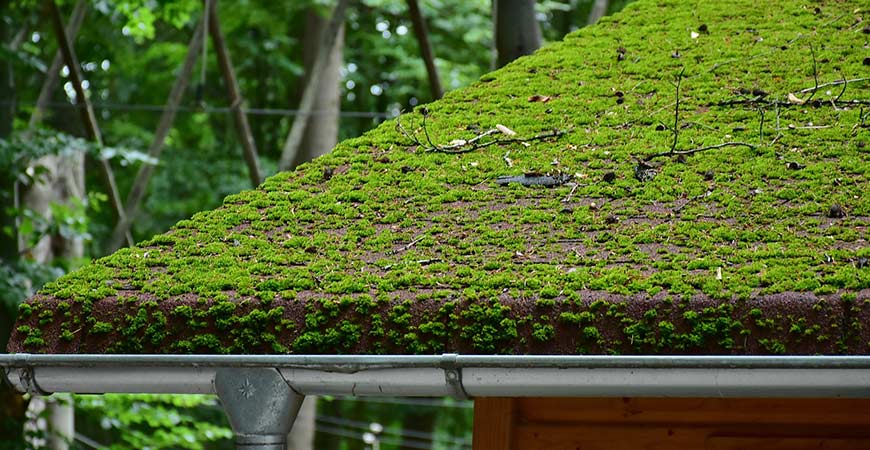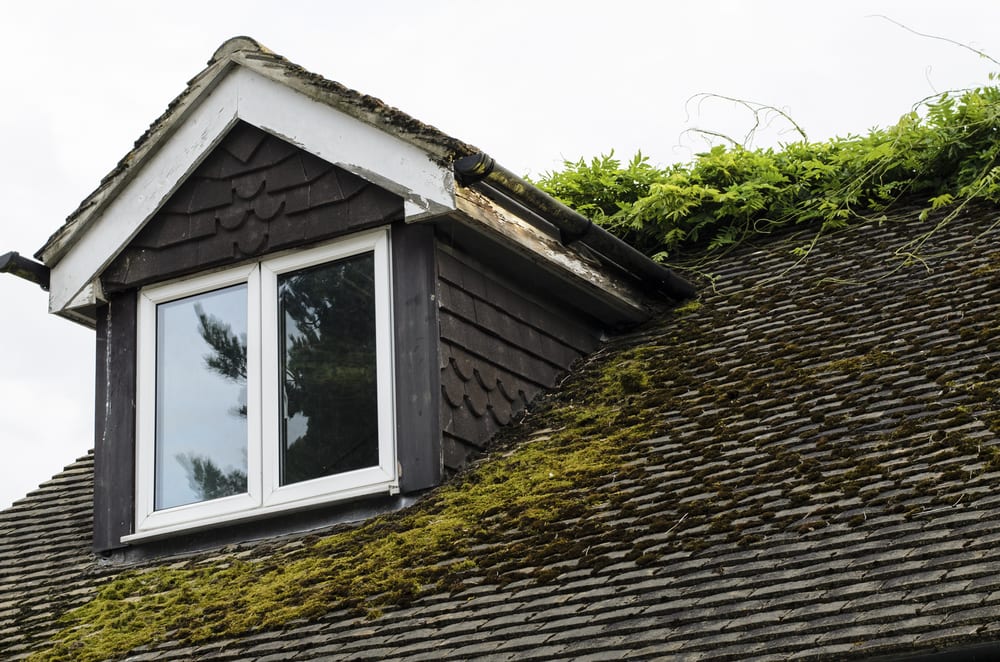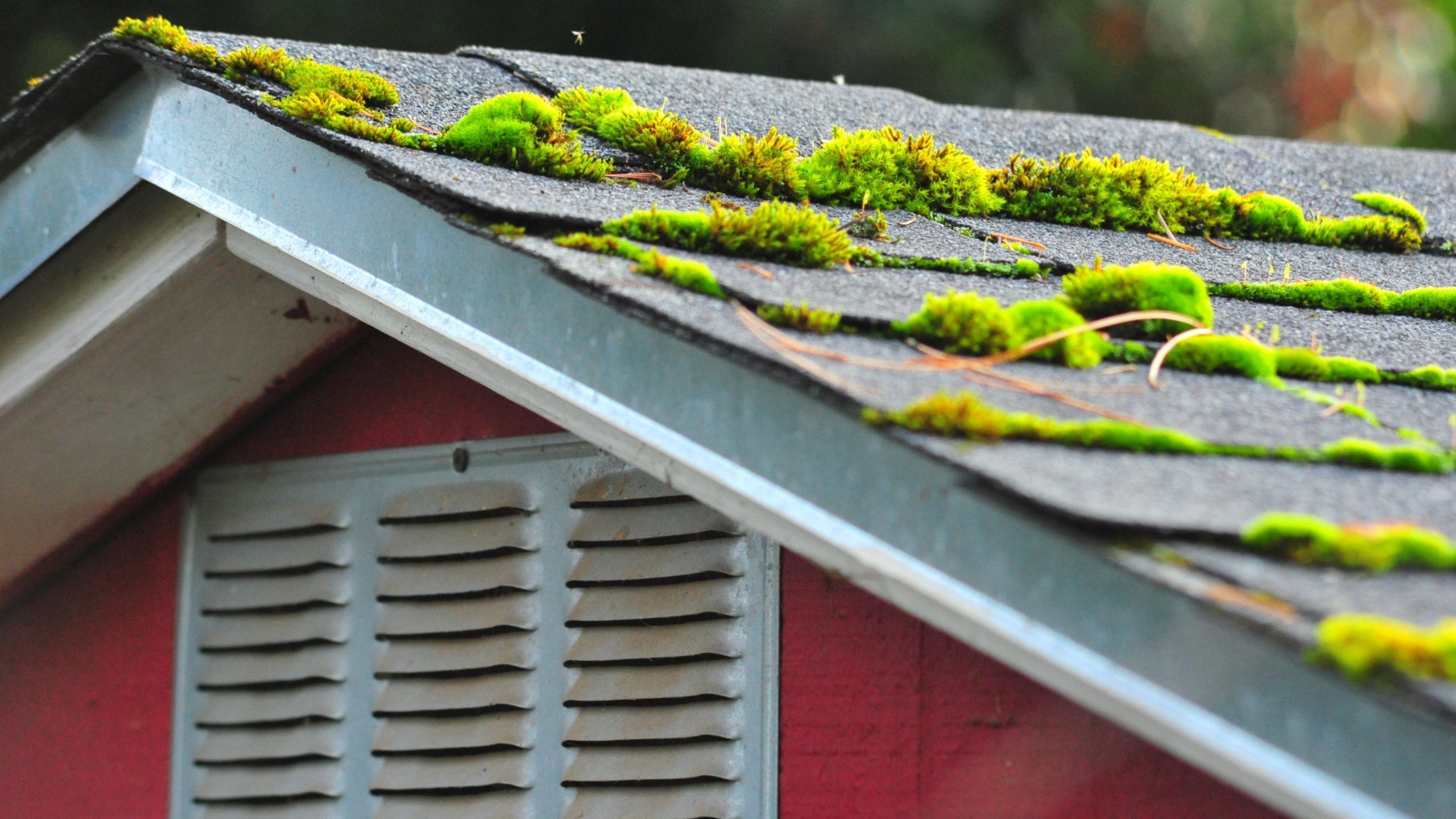Moss is a common problem for many homeowners. It can be challenging to remove, and it ruins the look of your house. There are some ways that you can prevent moss from growing on your roof, though! In this blog post, we will go over how to do just that so that you don’t have to deal with moss again.

Why is Moss Bad for Roof?
Why is moss bad for the roof? Moss can be bad for shingles. Moss is a form of algae. If it’s left unchecked, moss will weaken the roof it covers and eventually causes leaks or even complete failure of its waterproofing. Moss can grow on your shingles and soak up water, which leads to consistent wet conditions. This will make the whole area damp and create a breeding ground for mold growth. When it rains, this excess moisture creates an environment that favors moss growth over other plants like grasses or shrubs.
How To Remove Moss From a Roof
As you can see, it would be best to avoid having moss on your roof by any means necessary! Thankfully, there are some ways to prevent it from growing on your shingles.
If you have moss now and want to remove it without spending a lot of money or effort removing the entire roof, then this is perfect for you! With a bit of elbow grease, these tips will help rid your house of pesky moss in no time at all. Remove Moss From a Roof
Several techniques can be used to get rid of moss from an area where it has already grown. You don’t need any fancy equipment either – just good old-fashioned scrubbing action with whatever tools you have nearby.
One of the best ways to remove moss from your roof is by using vinegar: Mix equal parts water, white distilled vinegar, and baking soda in a spray bottle. If you see moss on your roof, do not scrub it off with a stiff brush! First, make a mixture of baking soda and water. Use this to scrub where the moss has grown softly.
Another great way to get rid of any unwanted growth on your roof is salt! Do you know how salt works as an ice melter when it starts snowing? Same idea here – just put some salt on top of the shingle where there’s excess moss growing.

Methods You Shouldn’t Use To Remove Moss From a Roof
Roof moss can be a very annoying thing to deal with. While there are many apparent methods for dealing with it, some of these methods can damage your home’s roof even more.
One method that you should never use to remove moss from your roof is high-pressure water blasting. While this may seem like the perfect solution, it can weaken or damage shingles and cause leaks in your roof once blasts of pressure weaken them.
You shouldn’t just try using bleach as well because while it will kill some off, there’s no way for you to know if all of the growth has been eliminated since nothing ever dries after being sprayed with bleach. This means that even though the mold might be gone, its spores could still stay alive on other surfaces waiting for more nutrients so that they can grow back again.
The Benefits of Removing Moss-Covered Shingles Before a New Roof Installation
Before you start a new roof installation, it’s a good idea to remove any moss-covered shingles.
If you want to avoid the hassle of having to deal with pesky growth on your roof in the future, then removing old shingles that have been colonized by moss is going to be the best solution for you – plus, there are some additional benefits as well! Here is one of the reasons why removing old, decaying shingles will benefit your home:
There’s less material up there that could get damaged or leaked if exposed to water for an extended period. This will give you peace of mind knowing that your home is well protected against any possible damage caused by excess moisture entering through cracks or seams in old materials.
A moss-free roof can add to the value of your home by giving it a more appealing appearance. This means that if you choose to sell it down the road, you won’t have to worry about them dealing with a filthy roof.

How To Prevent Moss on Your New Roof
There are different techniques you can use to prevent moss from growing on your new roof. Here’s a couple of them:
Make sure to get algae-resistant shingles. Whether you’re going with asphalt, metal, or clay tiles, make sure that they’ve got some type of coating on them, so they are resistant to getting mossy growth over time.
Install a wide strip of aluminum around the entire edge of your roof for added protection against any future development nearby, which could trigger extra moisture and potential mold growth up there. This is one step in helping prevent it from growing again should it develop while your house gets older!
Conclusion
Now that you know a few different methods for dealing with moss growth on your roof, what way do you prefer? We would love to hear your thoughts on the project!



